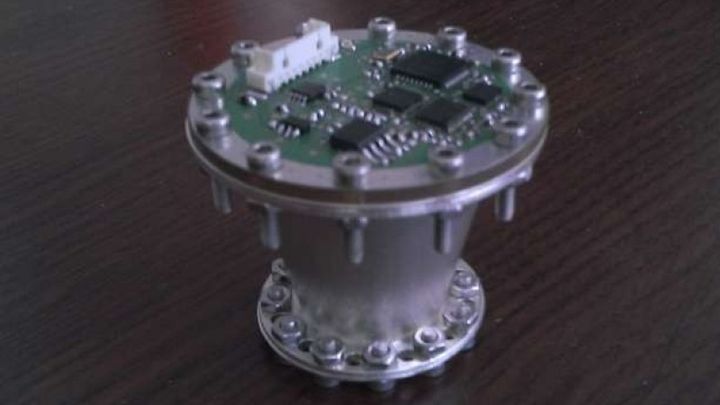
Flying an EMDrive into space
My name is Paul Kocyla, and I am a hardware engineer in Aachen/Germany.
I built a tiny satellite which fits into your pocket. It flew into orbit in 2013 and complies to a femtosatellite standard called PocketQube.
Recently, a new kind of space propulsion device ran through the media. It was called the "impossible" thruster, because it could produce thrust without expelling any propellant.
A thruster like this is of the same importance like the steam engine or internal combustion engine was many years ago. It could change our mobility on Earth and in space.
A university in China, NASA Eagleworks, a university in Germany and several independent individuals confirmed that this kind of thruster, known as the EM-Drive, produces a tiny force just from electric power.
In the last years I developed a tiny version of this thruster and tested it over several weeks, and it shows a tiny net force.
However there are claims that these forces might come from other sources like airflow, expanding cables or the interaction with Earth´s magnetic field.
The only way to finally prove it that it really works is sending it to space. Other existing EMDrives are at least one order of magnitude heavier than ours, so the costs for sending them into orbit are going to hundreds of thousands or even millions of dollars.
Ours can be sent into a 700km orbit for 25000€ - including flight qualification testing. That´s the total price my former PocketQube cost including development, testing and launch.
This will be a historical moment, because it will be the first EMDrive in space. If it works, it will bring another StarTrek technology into real life.
My friend and team member Jo Hinchliffe (Concretedog) from Wales is building the PocketQube satellite chassis.
You can check out more details about this project here:
https://hackaday.io/project/5596-emdrivesatellite
(The second link has been removed, everything will be continued on the link above)
The EMDrive is already built and running.
The plan is to finish the satellite which will carry it before the end of this year and possibly get a launch slot on the UNISAT-7 mission which is set for 2017.
You can be part of history by making this mission possible.
Visit the project links to get more information about the EMDrive and test data which we made available to the public.
If the mission is successful I hereby guarantee to make the whole project Open Source.
The satellite will have an amateur radio payload consisting of Hellschreiber-transmission and a camera sending SSTV (Slow Scan Television).